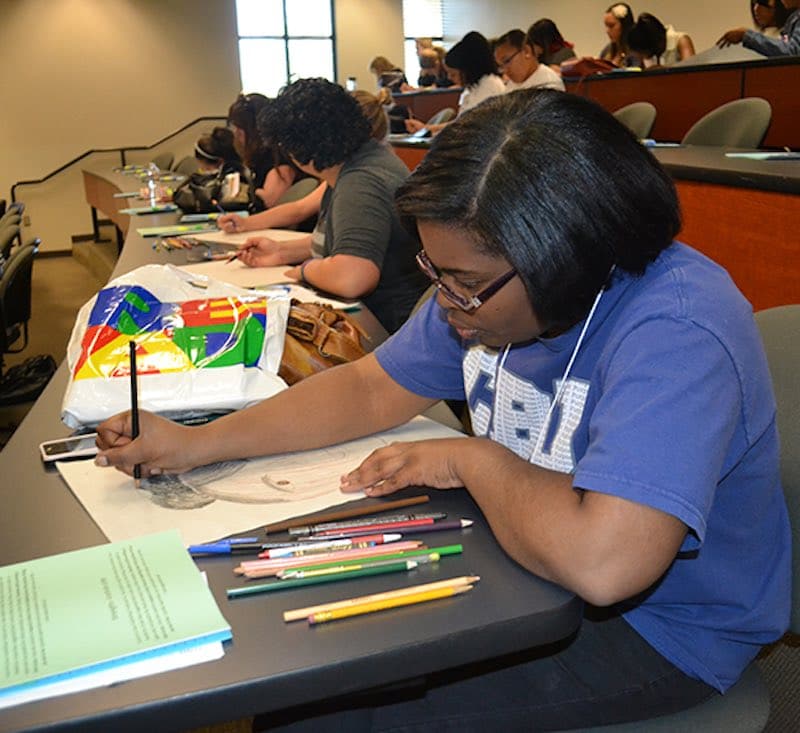
10 Jun Creative Alternatives to Suspension and Expulsion
The effectiveness of traditional out-of-school-suspension and expulsion of students has been under a microscope for quite some time, and for good reason. These traditional forms of discipline can not only hurt academic performance but can actually worsen behavioral problems, often increasing the likelihood of school dropout rates. This is even more relevant for students with emotional/behavioral disorders (EBD), or those who have experienced adverse childhood events (ACEs). But as parents and teachers, we can provide solutions. We can choose creative alternatives to suspension that reinforce resilience instead of ineffective punishments. Let’s jump in to a few alternatives that can be implemented fairly easily in schools.
Alternatives to Suspension in Schools
Identifying effective alternatives
Effective alternatives to suspension are those that are reflective, restorative, and practical. Self-awareness is key to making change, and every student should be provided an opportunity to repair their behavior in a safe, supportive environment, that allows them to practice and improve this behavior for future success.
Alternatives to suspension in middle schools, high schools, and even elementary schools can be adjusted to fit their respective target groups, but will primarily be the same. Many of these are used in schools throughout the country, and many of these strategies make up the foundation for The Write of Your L!fe’s curriculum.
Behavior Contracts
A written agreement between the student, teacher, and often the parent or guardian about the student’s behavioral expectations. These are most effective when the student has an opportunity to negotiate and problem solve. If implemented in a way that empowers the student, rather than demands participation in an authoritative way, students can sharpen their problem-solving skills and learn to identify alternative behavior choices. Contracts can also help teach self-management.
Restitution
Effective alternatives to suspension will be those that do not rely on the parents to clean up the mess. So restitution here refers less to financial compensation, but instead, compensation for any damage caused that the students can fix themselves. It allows them to repair and restore their school environment back to the way it was, learning, but also practicing, accountability. Restitution can be physical—like repainting a wall they vandalized, or even providing emotional restitution by doing something nice for a classmate. Usually the kind of restitution is directly related to the offense they’ve committed.
Community Service
When a student engages with their community they are often more connected to others and less at risk for isolation, peer-pressure and making poor choices. As they begin to build ties with their community and community members, positive relationships with adults emerge. Community service activities encourage individuals to think outside of themselves and how they can use their energy to help others, which makes this a beneficial alternative to suspension. They can volunteer in soup kitchens, plant trees or flowers in community gardens, or even tutor other students.
Restorative Justice
One of the best alternatives to suspension is through restorative justice. It came from the technique in the criminal justice system that those convicted of a crime are held accountable by facing the people who they’ve harmed. In schools, it empowers students to resolve their grievances and conflicts on their own, with staff or other students mediating. Implementing restorative justice circles give every student the chance to express themselves and be heard, allowing for the formation of positive attitudes towards fairness and justice. There are different types of restorative justice, but a common type is youth courts.
Women Wonder Writers’ Youth Court program is a collaborative results-based peer-to-peer intervention and prevention program designed to provide an alternative to suspension for high risk youth with behavioral or delinquency problems. Within this program and The Write of Your L!fe workshop, students practice speaking and listening to peers and learn the principles of restorative justice talking circles to resolve conflict. The Youth Court case managers and The Write of Your L!fe instructors often challenge the students by welcoming opposing viewpoints, so the students learn respect for differing perspectives.
Counseling
Understanding why a student behaves the way they do will almost always be more beneficial than punishing them. Counseling, whether in school or outside of school, can help zero-in on a child’s personal issues affecting their learning or behavior.
Parental Engagement
When parents are more involved, they can help brainstorm approaches to reducing negative behavior and monitor that change. Parents, teachers, and students can work together to come up with coordinated behavior plans that work for everyone. We know the consistency of a support system can be the foundation of a child’s future success, so anything to help promote this child-caregiver bond can aid in the decrease of suspension. Including parent engagement opportunities or events at your school is also a great preventative measure for suspension.
Mini course/skill modules
These are brief courses or short units related to the student’s behavior. Typically assigned topics are specific to the offense, and the courses can be a mix of videos, readings, or reports that often involve strategies for conflict resolution, appropriate communication, and much more.
Reflective Tasks
Reflective tasks can be part of mini courses, or they can stand on their own. Oftentimes, they are interwoven in the very fabric of social emotional learning curricula. Teachers will give writing prompts for some kind of reflective essay or letter to the students’ future selves. They may participate in role-play or a performance piece to redo their behavior, so they can learn possibilities for the next time. In The Write of Your L!fe, the students create introspective art projects, write open letters to victims, journal, write poetry, and much more. This kind of expressive writing helps build resilience and self-esteem.
Educational Projects
Assigning or engaging the student in a project is a creative alternative to traditional suspension. If they’ve hurt someone, or bullied someone, they could do a project on bullying, researching how harassment affects individuals.
Social Skills Instruction
Teaching interpersonal communication skills can increase social competence, which helps build and sustain healthy relationships, as well as holding down jobs in the future. Social skills instruction is most effective when reinforced on a daily basis. Social emotional learning-based curriculums focus on sharpening these skills, which is why they’re so beneficial for students at risk of trauma or those impacted by the juvenile justice system. Students in SEL programs that incorporate group activities, like The Write of Your L!fe, regularly receive this instruction as it is woven into the curriculum itself.
Alternative programming
This can be a change to the student’s schedule or classes/course content. It helps students acquire other skills aside from subject-based material. It can be short term or long term, and is sometimes offered as work experience or independent study depending on the school and plan. Alternative programming is tailored to the student’s individual needs, and the programming is made by the IEP (Individualized Education program) team. These can include alternative or “community schools.“
Behavior Monitoring
Behavior monitoring is just that—closely monitoring the child’s progress, their behavior and their academic improvement, usually through some kind of behavior coordinated plan. But realistically, using any of these alternatives, is a form of behavior monitoring. Whether you use a behavior contract to monitor, or use the feedback from the counselor during counseling sessions to monitor. Maybe you choose to track their progress based on an assessment of their completed reflective task or educational project. Ideally, the combination of these alternatives create effective metrics to monitor behavior.
Most educators have probably tried one, or perhaps several of these options in their classrooms. Restorative justice comes in many forms. The question really becomes are we doing enough to support all of our students? Are we doing the best we can with the resources we have to tailor the curriculum to our student’s individual needs? It’s no easy feat. At Women Wonder Writers we do our best to implement all of these components, teaching a curriculum that is both trauma-informed and restorative in nature.


